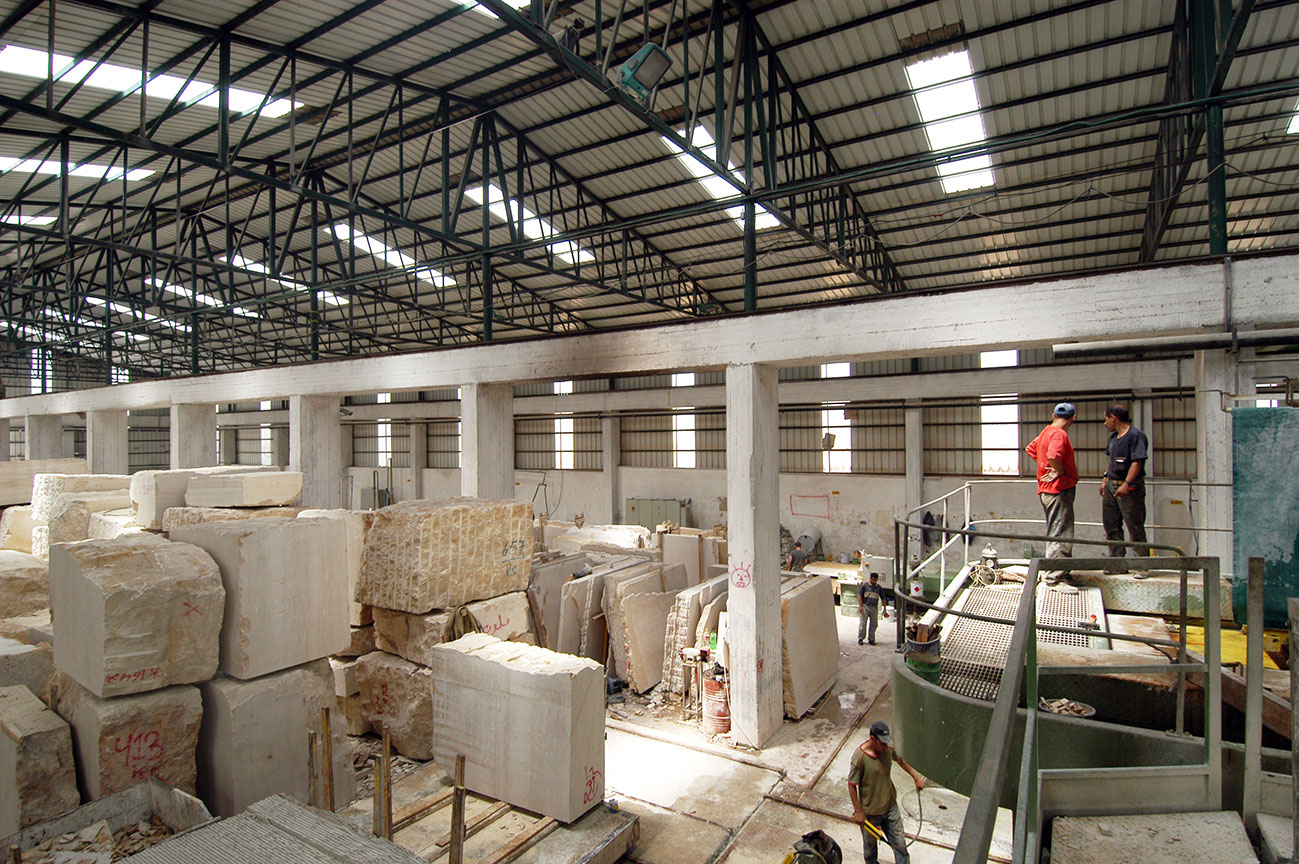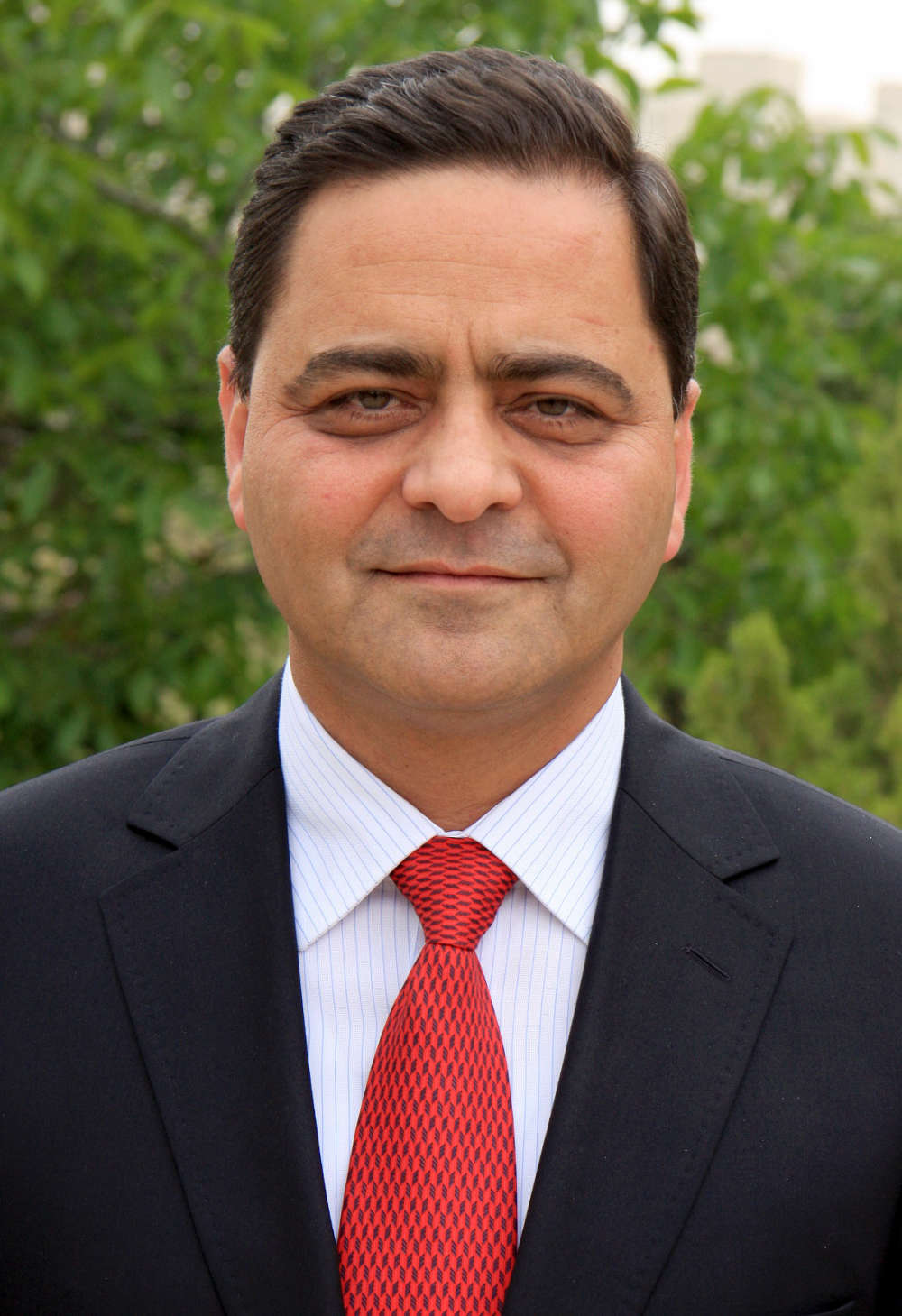Stonemasonry is an art that was central to many ancient civilizations, be it among the pharaohs in Ancient Egypt, the Greeks, the Romans, or the rulers and clergy of old Europe, who built great palaces, monuments, and places of worship. The stone industry was a main factor in contributing to the beauty, glory, and glamor of these civilizations, and its artefacts illustrate the knowledge, cultural sophistication, and architectural wealth of these nations. The Holy Land of Palestine was equally rich with such monuments, as can be witnessed by, for example, the great walls of Jerusalem and Akko, castles and mansions, such as Hisham’s Palace, and the distinctive character of the urban and village architecture that can be found in mountainous Palestine in the north, to the cobblestoned alleys of the Old City and the streets of the outer quarters of Jerusalem in central Palestine, to the towns and palaces in the country’s south.
Over the centuries, millions of tons of soft and hard limestone (or marble, as it is called commercially) have been produced for construction not only in Palestine but also in the surrounding areas. Palestine was unique compared to Jordan, Lebanon, Iraq, and even Syria, where the quality of such material was inferior and its quantities were scarce. In northern Palestine, plenty of limestone was mined that was excellent for the external cladding of buildings, whereas the quality of the material found in the south was entirely different – in the form of hard limestone or marble in big-size blocks that was processed into various finishes that were ideally suited for internal flooring. Stones come in a wide variety of types and with varying colors; they are intricately cut, smoothed, and polished. Quarries have traditionally produced blocks, slabs, building stone, decorative products, and tiles. Recently, processing has expanded to include mosaics, headstones and funerary art, and manufactured stone, and Palestinian carved stones have accessed international niche markets for carved products. But the beauty of Palestinian stone lies not just in its quality or its varying colors, Palestinian stones are mined in the Holy Land, which gives them a unique spiritual and symbolic imagery that is coveted by Palestinians and citizens across the world alike.
Despite Palestine’s small size, the industry has thrived. Three hundred quarries, 750 factories, and 650 workshops are located throughout the country. In the West Bank, the main centers are in Bethlehem and Hebron, whereas most of the quarries are located in Area C.

The industry has surprised the world with the quantities it produces. During the 1990s, stone and marble production grew at an average annual rate of 7.3 percent to reach annual sales of US$ 450 million by the turn of the millennium. Trade in stone and marble averaged a yearly growth rate of 8.7 percent. Production slowed during the second Intifada but has since resumed its thriving pace. Today, the sector produces 1.8 million tons of raw material and 22 million square meters of stone for flooring and cladding, thus providing 4 percent of global production and generating US$ 400 million in total revenue, produced by 15,000 full-time laborers.* But this is only a fraction of the sector’s capacity. According to the State of Palestine National Export Strategy for stones and marble, the reserves in the sector are valued at US$ 30 billion, which reflects its enormous export potential. The currently operating quarries are concentrated around the cities of Hebron and Bethlehem, but there exists an abundance of other reserves located in Area C, “with estimated deposits of some 20,000 dunums of quarry-able land.”

Notwithstanding such success, the sector is facing a number of challenges. Despite its much larger potential, the total revenue generated by exports in the past few years did not exceed US$ 166 million, and the quality and price of exported products has changed, which is requiring the industry to continuous adapt. The sector must continuously update and improve its expertise, and thus, its knowledge and technical know-how. Such support was introduced particularly by the industries in Italy and Spain, significantly affecting the efficiency of production. Exporting its product to 56 countries, Palestine has entered the international market, changing the standards used by the industry. For example, the usage and thickness of export materials has varied over time, which applies in particular to stone used for external cladding. Also, the demand for the warm Jerusalem Gold tone, which was the preferred color during the 1990s, has dropped significantly, whereas beige, white, and grey have been the popular colors since 2015.
Further challenges that face the industry are related to the location of reserves in Area C. Even though it comprises over 60 percent of the West Bank, Area C is under full Israeli control, with heavy restrictions on the building of facilities. Thus, there are heavy restrictions regarding the obtaining of new mining permits or the renewal of existing ones. Should these restrictions be lifted, it is estimated that the industry would double in value and contribute an additional US$ 241 million to the Palestinian GNP. Yet, and despite this limitation, Palestine is ranked as the twelfth-largest producer of stone and marble in the world, producing 22 million square meters of goods annually (from 100 million tons of raw stone), and the labor productivity in the sector is almost five times that of other sectors. In addition, the sector has built the capacity to meet large orders and obtained the international quality certification ISO 9000:2000.
Palestine’s stone and marble sector is in continuous competition with a number of other providers of similar products, some of whom have entered the market at lower prices for lesser-quality products. Moreover, as it had to cope with the dramatic decrease of consumption that has taken place in countries such as Saudi Arabia, Kuwait, and Qatar, Palestine during the last few years has been bidding for a share in the American market (one of the largest in the world), where it is trying to galvanize the higher consumption and prices that existed before 2008. Moreover, international competition has increased dramatically with China and India as well, which now produce half of the international production and have replaced Italy, Spain, and Greece, which used to play this role ten years ago. Regionally, Egypt manages to sell its limestone products at unprecedented cheap prices that equal 10 to 20 percent of Palestinian prices; the devaluation of the Egyptian Pound has been dramatic. And Turkey, having experienced a reduction in the total exports of its material over the last couple of years, has begun to subsidize the industry, which is making it the foremost producer and exporter of natural stone in the region. Turkey has developed the industry to the point that it has multiplied revenues 18-fold in 18 years. In this context it must be mentioned that the price of a unit of stone has dropped dramatically in most countries. The price of US$ 68 per square meter in Italy and US$ 30 per square meter in Portugal, India, and Turkey are the averages. In the same context, much lower prices are demanded for stone and marble from Mexico, Iran, and Egypt. Palestine lies between the two price levels, in close range with Turkish material.
It should be clear now that the markets in our region are open for competition and that the demand for Palestinian stone and marble is still high. There may be an opportunity in the coming five years for Palestinian stone to be in high demand in the rebuilding of thousands of houses and commercial centers in Syria, Iraq, and other locations. The question is how much leverage Palestine will have on the reconstruction sector in these countries, in comparison to Egypt and Turkey, and whether Palestine can have a share in this process.
*https://www.paltrade.org/upload/multimedia/admin/2015/04/553dcf8d2d3e8.pdf
For further information on the sector, see “Marble from the Holy Land: The Pillar of the Palestinian Export Sector,” in the November 2015 issue of TWiP, and “Stones and Marble Sector Export Strategy 2014-2017,” available at https://www.paltrade.org/upload/multimedia/admin/2015/04/553dcf8d2d3e8.pdf.


